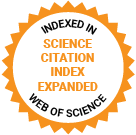Journal of Medical Internet Research
The leading peer-reviewed journal for digital medicine and health and health care in the internet age.
Editor-in-Chief:
Gunther Eysenbach, MD, MPH, FACMI, Founding Editor and Publisher; Adjunct Professor, School of Health Information Science, University of Victoria, Canada
Impact Factor 5.8 CiteScore 14.4
Recent Articles

As health care continues to evolve with technological advancements, the integration of artificial intelligence into clinical practices has shown promising potential to enhance patient care and operational efficiency. Among the forefront of these innovations are large language models (LLMs), a subset of artificial intelligence designed to understand, generate, and interact with human language at an unprecedented scale.

Previous studies have shown that electrocardiographic (ECG) alarms have high sensitivity and low specificity, have underreported adverse events, and may cause neonatal intensive care unit (NICU) staff fatigue or alarm ignoring. Moreover, prolonged noise stimuli in hospitalized neonates can disrupt neonatal development.


The maintenance of a healthy lifestyle significantly influences pregnancy outcomes. Certain pregnant women are more at risk of engaging in unhealthy behaviors due to factors such as having a low socioeconomic position and low social capital. eHealth interventions tailored to pregnant women affected by these vulnerability factors can provide support and motivation for healthier choices. However, there is still a lack of insight into how interventions for this target group are best designed, used, and implemented and how vulnerable pregnant women are best reached.

Health education and promotion are recognized as effective strategies for fostering healthy ageing, reducing the disease burden, and addressing health inequalities, particularly when delivered through digital media. Primary care workers are often regarded as the key providers of these interventions. Despite the strong practical significance and substantial individual demand, the use of digital media for delivering health promotion practices was not widespread in China. One of the main challenges identified is the providers’ inadequate capacities. However, little is known about the digital capacity for health promotion among primary care workers.

Traditionally, medical research is based on randomized controlled trials (RCTs) for interventions such as drugs and operative procedures. However, increasingly, there is a need for health research to evolve. RCTs are expensive to run, are generally formulated with a single research question in mind, and analyze a limited dataset for a restricted period. Progressively, health decision makers are focusing on real-world data (RWD) to deliver large-scale longitudinal insights that are actionable. RWD are collected as part of routine care in real time using digital health infrastructure. For example, understanding the effectiveness of an intervention could be enhanced by combining evidence from RCTs with RWD, providing insights into long-term outcomes in real-life situations. Clinicians and researchers struggle in the digital era to harness RWD for digital health research in an efficient and ethically and morally appropriate manner. This struggle encompasses challenges such as ensuring data quality, integrating diverse sources, establishing governance policies, ensuring regulatory compliance, developing analytical capabilities, and translating insights into actionable strategies. The same way that drug trials require infrastructure to support their conduct, digital health also necessitates new and disruptive research data infrastructure. Novel methods such as common data models, federated learning, and synthetic data generation are emerging to enhance the utility of research using RWD, which are often siloed across health systems. A continued focus on data privacy and ethical compliance remains. The past 25 years have seen a notable shift from an emphasis on RCTs as the only source of practice-guiding clinical evidence to the inclusion of modern-day methods harnessing RWD. This paper describes the evolution of synthetic data, common data models, and federated learning supported by strong cross-sector collaboration to support digital health research. Lessons learned are offered as a model for other jurisdictions with similar RWD infrastructure requirements.

Patient organizations (POs) play a crucial role in supporting individuals with health conditions. Their activities range from counseling to support groups to advocacy. The COVID-19 pandemic and its related public health measures prompted rapid digital transformation efforts across multiple sectors, including health care.

Mobile health (mHealth) refers to using mobile communication devices such as smartphones to support health, health care, and public health. mHealth interventions have their own nature and characteristics that distinguish them from traditional health care interventions, including drug interventions. Thus, randomized controlled trials (RCTs) of mHealth interventions present specific methodological challenges. Identifying and overcoming those challenges is essential to determine whether mHealth interventions improve health outcomes.

The last 25 years have seen enormous progression in digital technologies across the whole of the health service, including health education. The rapid evolution and use of web-based and digital techniques have been significantly transforming this field since the beginning of the new millennium. These advancements continue to progress swiftly, even more so after the COVID-19 pandemic.

The status of the digitalization of companies and institutions is usually measured using maturity models. However, the concept of maturity in general practice is currently unclear, and herewith we examine the question of how maturity can be measured. There is a lack of empirical work on the dimensions and subcategories of digital maturity that provide information on the assessment framework.
Preprints Open for Peer-Review
Open Peer Review Period:
-
Open Peer Review Period:
-
Open Peer Review Period:
-
Open Peer Review Period:
-



















